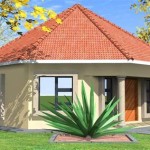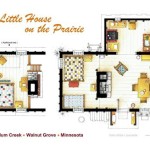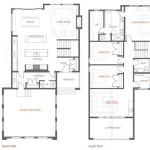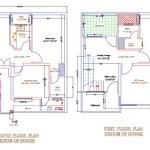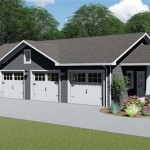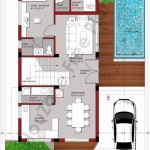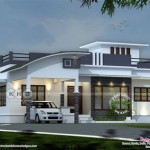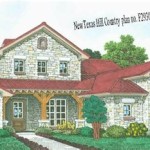Eco House Floor Plans: Designing for Sustainable Living
Eco-friendly house plans prioritize sustainability, energy efficiency, and a reduced environmental impact. These plans incorporate design elements that minimize resource consumption, improve indoor air quality, and often integrate renewable energy sources. Selecting an eco-house floor plan is a crucial first step towards building a greener home.
Key Considerations When Choosing an Eco-House Floor Plan
Several critical factors contribute to the overall eco-friendliness of a house plan. Careful consideration of these elements during the planning phase ensures a truly sustainable design.
- Orientation and Solar Gain: Properly orienting the house to maximize passive solar gain in winter and minimize it in summer reduces heating and cooling needs. South-facing windows (in the northern hemisphere) allow sunlight to penetrate deep into the house during colder months, while overhangs and strategically placed trees can shade the house in the summer.
- Insulation and Air Sealing: Effective insulation and air sealing are crucial for maintaining a comfortable indoor temperature and reducing energy waste. High-quality insulation in walls, roofs, and floors minimizes heat transfer, while airtight construction prevents drafts and air leakage.
- Natural Ventilation: Incorporating natural ventilation strategies like operable windows, skylights, and cross-ventilation reduces reliance on mechanical ventilation systems. This improves indoor air quality and saves energy.
- Water Efficiency: Eco-house plans frequently include features that promote water conservation, such as low-flow fixtures, rainwater harvesting systems, and greywater recycling systems for irrigation.
Floor Plan Features that Enhance Sustainability
Specific floor plan features can significantly contribute to the eco-friendliness of a home. These design choices optimize space utilization and promote sustainable living.
- Open Floor Plans: Open floor plans promote natural airflow and allow for more efficient heating and cooling. By minimizing interior walls, these plans create a sense of spaciousness while reducing the need for excessive lighting.
- Zoning for Temperature Control: Dividing the house into zones based on usage allows for targeted heating and cooling. Bedrooms and living areas can be maintained at different temperatures, reducing energy waste.
- Compact Design: Smaller, more compact floor plans minimize the overall building footprint and resource consumption. Efficient use of space reduces material needs and lowers ongoing energy costs.
- Outdoor Living Spaces: Incorporating patios, balconies, or decks extends living space outdoors, encouraging connection with nature and reducing reliance on energy-intensive indoor activities.
Material Selection in Eco-House Plans
The choice of building materials plays a crucial role in the overall environmental impact of a home. Eco-house plans often prioritize sustainable and locally sourced materials.
- Recycled and Reclaimed Materials: Utilizing recycled or reclaimed materials, such as reclaimed lumber or recycled steel, reduces the demand for new resources and minimizes waste.
- Sustainably Harvested Wood: Choosing wood certified by organizations like the Forest Stewardship Council (FSC) ensures that the lumber comes from responsibly managed forests.
- Low-VOC Materials: Selecting materials with low or zero volatile organic compounds (VOCs) improves indoor air quality and minimizes exposure to harmful chemicals.
- Locally Sourced Materials: Using materials sourced from local suppliers reduces transportation costs and associated greenhouse gas emissions.
Integrating Renewable Energy Systems
Renewable energy systems are a core component of many eco-house designs, reducing reliance on fossil fuels and lowering operating costs.
- Solar Panels: Roof-mounted or ground-mounted solar panels generate electricity from sunlight, reducing or eliminating reliance on grid electricity.
- Solar Water Heating: Solar thermal systems use sunlight to heat water, reducing the energy required for domestic hot water.
- Geothermal Heating and Cooling: Geothermal systems utilize the constant temperature of the earth to provide efficient heating and cooling.
- Wind Turbines: Small-scale wind turbines can generate electricity for homes located in areas with sufficient wind resources.
Adaptability and Future-Proofing
Eco-house floor plans should be adaptable to future needs and incorporate features that enhance long-term sustainability.
- Flexible Spaces: Designing spaces that can serve multiple functions allows for adaptability as needs change over time. For example, a guest room could easily be converted into a home office.
- Pre-wiring for Future Technologies: Pre-wiring for electric vehicle charging stations or smart home systems prepares the house for future technological advancements.
- Durable and Low-Maintenance Materials: Choosing durable and low-maintenance materials reduces the need for frequent replacements and minimizes long-term environmental impact.
Analyzing Site Conditions
Before finalizing an eco-house floor plan, careful analysis of the specific site conditions is essential to optimize sustainable design strategies.
- Topography and Sun Exposure: The slope of the land and the amount of sun exposure will influence the optimal orientation of the house and the placement of renewable energy systems.
- Prevailing Winds: Understanding prevailing wind patterns can inform the placement of windows and ventilation systems to maximize natural cooling.
- Water Availability and Drainage: Analyzing water availability and drainage patterns is crucial for designing effective rainwater harvesting and greywater recycling systems.

Eco Friendly Home Plans House Design

Gallery Of Eco Sustainable House Djuric Tardio Architectes 52

Eco Ranch Plan

Danish Smart House Prefab Inhabitat Green Design Innovation Architecture Building

Ecological House Plans E Pur X Drummond
Ecogeneration Luxury Sustainable Modular Homes Ecoliv

Eco Friendly House Plans Courtyard Design

Sustainable Living House Plan 33035zrx Architectural Designs Plans
Green Home Plans Eco Friendly

Dpe House Design Studio Energy Efficient S

